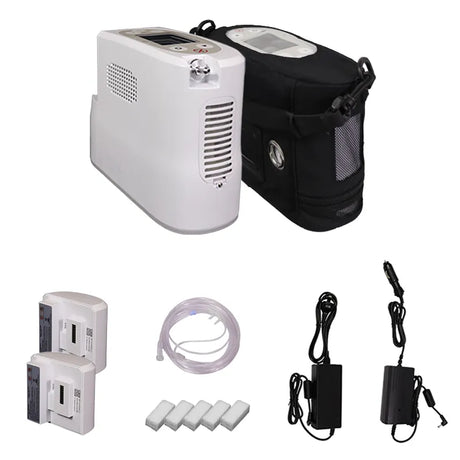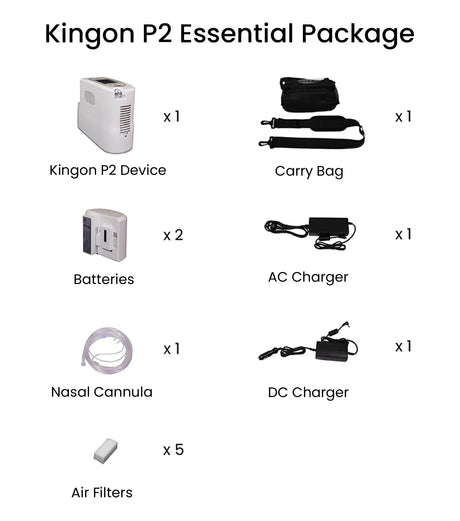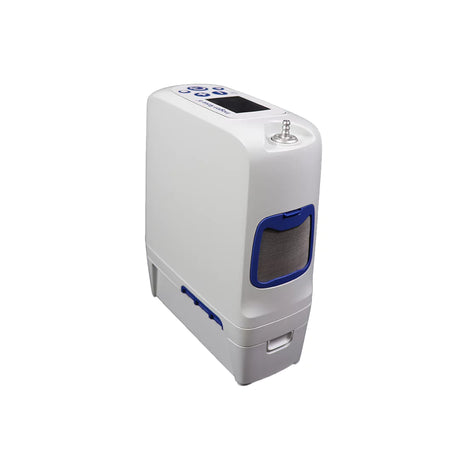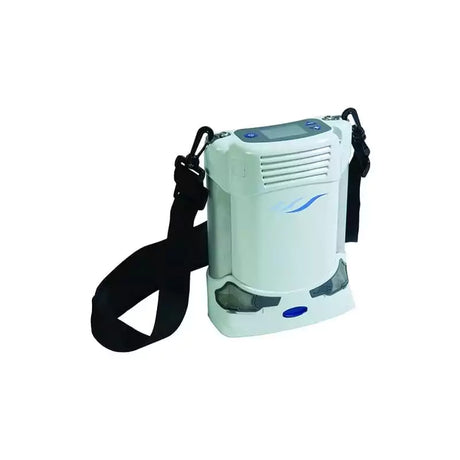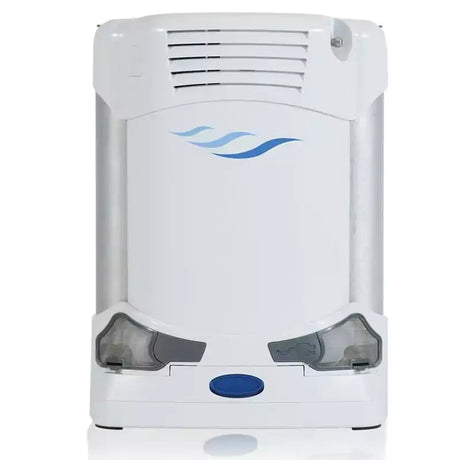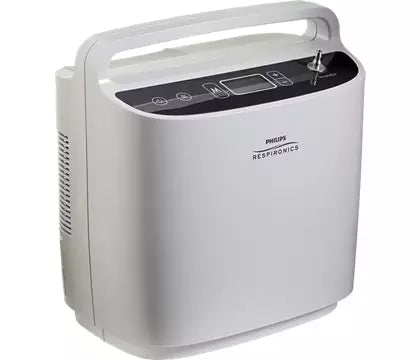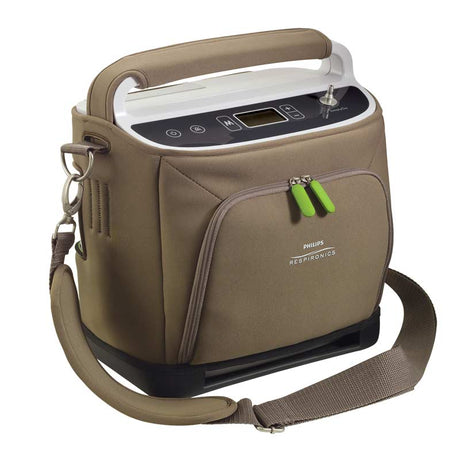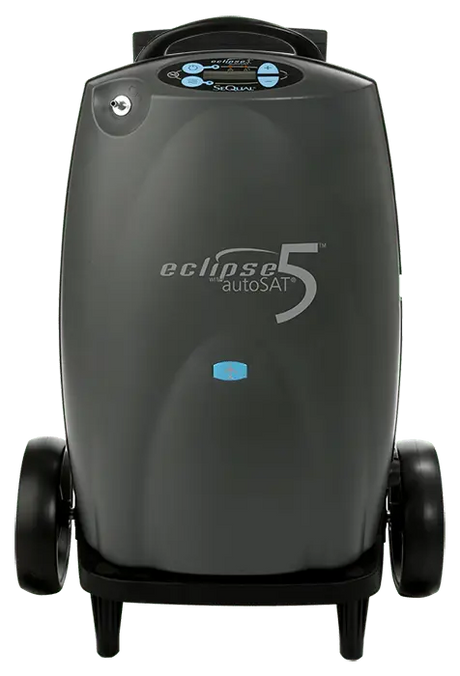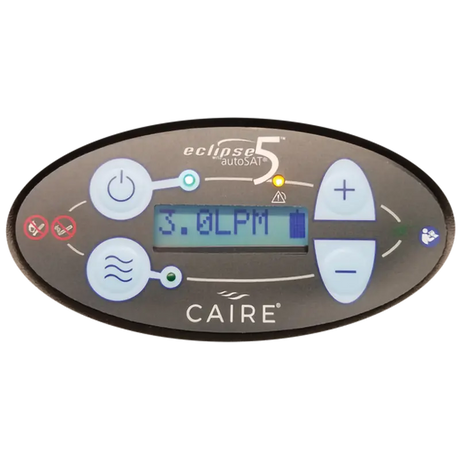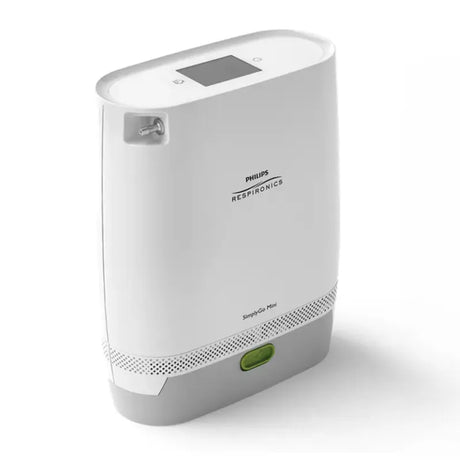If you or someone you care for needs oxygen therapy day-to-day, then I’m sure you’re aware of oxygen concentrators. With so many different features and capabilities, choosing one can be difficult. We will explore the various types of concentrators available on the market, discuss essential features, examine performance criteria, and highlight key factors to consider when purchasing an oxygen concentrator to ensure you select the most suitable device for your specific requirements. Oxygen concentrators can come with a hefty price tag, so choosing the right device is crucial.
What Is An Oxygen Concentrator & How Does It Work?
An oxygen concentrator is a medical device specifically engineered to deliver supplemental oxygen to individuals experiencing difficulty maintaining adequate oxygen levels in their bloodstream due to various health conditions. These devices function by drawing in ambient air, separating the oxygen from other components, and delivering purified, concentrated oxygen to the user. By providing a steady supply of concentrated oxygen, oxygen concentrators play a critical role in enhancing the quality of life and overall health of individuals suffering from respiratory illnesses or disorders that result in low oxygen levels in the blood.
There are two main types of oxygen concentrators available on the market, catering to different needs and environments. These include:
Stationary Oxygen Concentrators (OC) Designed for stationary use within the home, these devices are typically larger and more powerful, providing a continuous flow of oxygen. They are suitable for individuals who require consistent oxygen therapy.
Well-reviewed stationary oxygen concentrators:
- Philips Everflo Stationary L5 Home Oxygen Concentrator
- Longfian 5 Litre Oxygen Concentrator
- Longfian 10 Litre Oxygen Concentrator
Portable Oxygen Concentrators (POC) Lightweight and compact, portable oxygen concentrators are designed for individuals who require supplemental oxygen while on the go. They offer the convenience of mobility and often come with battery-powered options, making them ideal for those with active lifestyles or who need oxygen while travelling.
Well-reviewed portable oxygen concentrators:
- Kingon P2 Portable Oxygen Concentrator Kit (smallest POC in the world!)
- Inogen One G5 Portable Oxygen Concentrator
- Philips Portable Oxygen Concentrator SimplyGo
- Caire Freestyle Comfort Portable Oxygen Concentrator
How To Choose The Right Oxygen Concentrator For You
Selecting the right oxygen concentrator requires careful consideration of various factors to ensure the device meets your specific needs and preferences. Here are some essential features and benefits to consider when choosing the right oxygen concentrator for you:
Flow Rate: The flow rate refers to the amount of oxygen delivered by the concentrator, measured in litres per minute (LPM). Oxygen concentrators typically offer either continuous or pulse flow. Continuous flow devices provide a constant flow of oxygen, while pulse flow devices deliver oxygen in intermittent bursts, triggered by the user’s inhalation. It’s crucial to consult with your healthcare provider to determine the required flow rate based on your medical needs and ensure the selected device can provide adequate oxygen delivery.
Noise: As oxygen concentrators operate continuously, the noise level may impact the user's comfort, particularly during sleep or in quiet environments. Noise levels vary among devices, with some being as quiet as 40 dB (similar to a whisper) and others reaching 60 dB or higher (comparable to a normal conversation). Consider your noise sensitivity and the environment in which the device will be used when evaluating concentrator options.
Oxygen Concentration: Oxygen concentrators deliver varying levels of oxygen concentration, typically between 87% to 96%. It’s essential to choose a device that can consistently provide the oxygen concentration required by your specific medical condition. Consult with your healthcare provider to determine the appropriate oxygen concentration range for your needs, and verify that the selected device meets these requirements.
Portability: The size and weight of the oxygen concentrator play a significant role in its portability. Portable oxygen concentrators are typically smaller, lightweight, and come with carrying cases or backpacks, allowing for greater mobility. If you have an active lifestyle or require supplemental oxygen while travelling, a portable concentrator may be the most suitable option. Conversely, if you predominantly need oxygen therapy at home, a stationary unit may suffice.
Battery Life For portable concentrators, consider the device's battery life and availability of extra batteries to ensure uninterrupted oxygen therapy during extended periods away from a power source.
Ease of Use Look for devices with intuitive controls and clear displays for hassle-free operation.
Other Features: Other features to consider when purchasing the right oxygen concentrator include the ease of maintenance, such as filter changes, to ensure long-term reliability and performance. Also, consider the manufacturer's warranty coverage and availability of technical support to address any issues or concerns that may arise during the life of the device. Price is also a very important factor to consider. Some concentrators are quite costly, so take into account all the features mentioned when analysing the price.
Frequently Asked Questions When Purchasing Oxygen Concentrators
Are oxygen concentrators effective, do they really work? Yes, oxygen concentrators are effective medical devices designed to deliver supplemental oxygen to individuals with respiratory illnesses or conditions that cause low oxygen levels in the blood. They work by drawing in ambient air, separating oxygen from other gases, and providing a concentrated flow of oxygen to the user. When used according to a healthcare provider's recommendations, home oxygen adds significantly to the comfort and quality of life of patients.
Do I need a prescription to buy an oxygen concentrator? In many countries, including Australia, a prescription is required to purchase an oxygen concentrator. This ensures that the device is medically necessary and that the specific requirements, such as flow rate and oxygen concentration, are tailored to the user's needs.
Does Medicare cover oxygen concentrators? In Australia, the provision of home oxygen is not covered by Medicare or private health insurance. Medicare may provide partial or full coverage for oxygen concentrators under certain circumstances; be sure to check with your healthcare provider. In some cases, it can also be available free through State programs from public hospitals.
Can oxygen concentrators be used 24/7? Many oxygen concentrators are designed to operate continuously and can be used 24/7 when needed.
Does an oxygen concentrator produce pure oxygen? Oxygen concentrators do not produce 100% pure oxygen. They typically deliver oxygen concentrations between 87% and 96%, which is sufficient for most supplemental oxygen therapy needs. The specific concentration range will vary depending on the device and the user's requirements.
How long do oxygen concentrators last? Can they run continuously? The lifespan of an oxygen concentrator varies depending on the model, usage, and maintenance. Many concentrators can last up to 5-7 years or more with proper care.
Can you sleep with an oxygen concentrator? Yes, you can sleep with an oxygen concentrator. In fact, many individuals with sleep apnea or other respiratory conditions require supplemental oxygen during sleep. This is why considering the noise output of the device when purchasing is crucial.
Can you travel with an oxygen concentrator (plane, car, public transport, etc.)? Yes, you can. Portable oxygen concentrators are specifically designed for travel and ease of portability. Many POCs are approved for air travel, but it’s advisable to check with your airline first. POCs can also be used in cars and on public transport, providing users with the flexibility to maintain an active lifestyle while receiving oxygen therapy.


